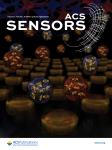Exosomes Biosensing

Extracellular vesicles (EVs) are secreted nanoparticles that are involved in intercellular communication and that modulate a wide range of biological processes in normal and disease conditions. However, EVs are highly heterogeneous in terms of origin in the cell, size, and density. As a result, complex protocols are required to identify and characterize specific EV subpopulations, limiting biomedical applications, notably in diagnostics. Here, we show that combining quartz crystal microbalance with dissipation (QCM-D) and nanoplasmonic sensing (NPS) provides a facile method to track the viscoelastic properties of small EVs. We applied this multisensing strategy to analyze small EVs isolated by differential ultracentrifugation from knock-in mouse striatal cells expressing either a mutated allele or wild-type allele of huntingtin (Htt), the Huntington’s disease gene. Our results validate the sensing strategy coupling QCM-D and NPS and suggest that the mass and viscoelastic dissipation of EVs can serve as potent biomarkers for sensing the intercellular changes associated with the neurodegenerative condition.
Also in the section
24.06.2022 - 24.06.2022
Cover in ACS Sensors
Check this beautiful front cover illustrating our work on EV biosensing in neurodegenrative disease conditions
https://pubs.acs.org/doi/full/10.1021/acssensors.1c0265830.04.2022 - 30.04.2022
IEEE Sensors France, Online conference and debate
The conference is now online!
https://www.youtube.com/watch?v=8Op1CWxiUYQ



